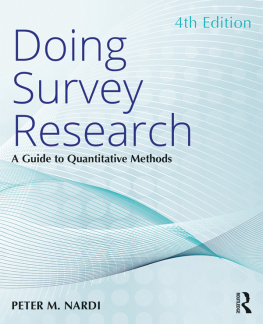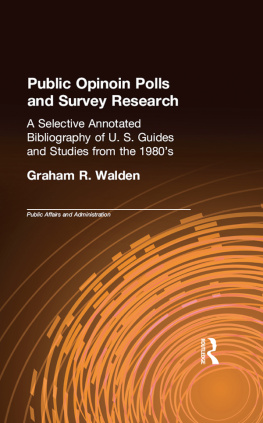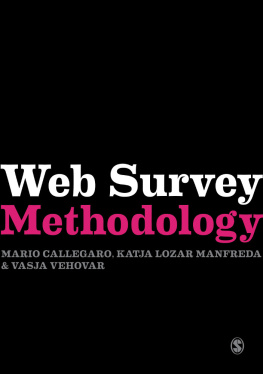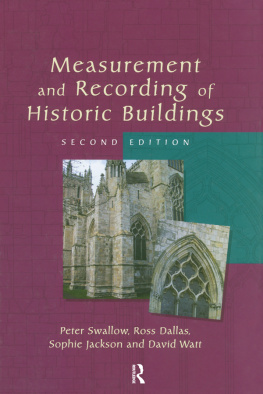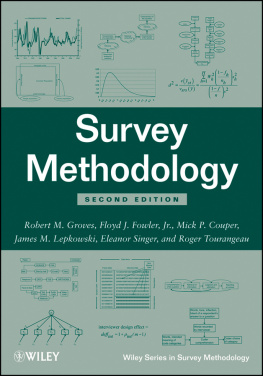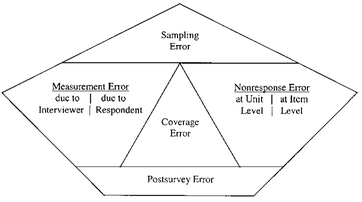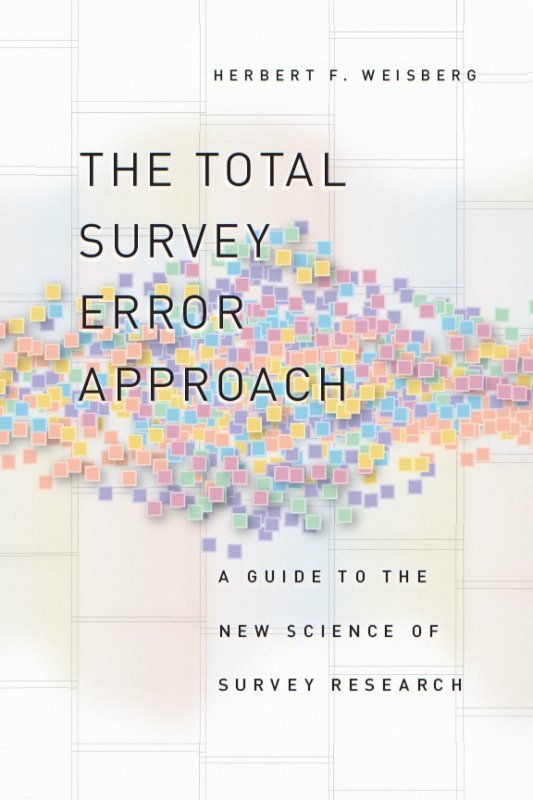
Table of Contents
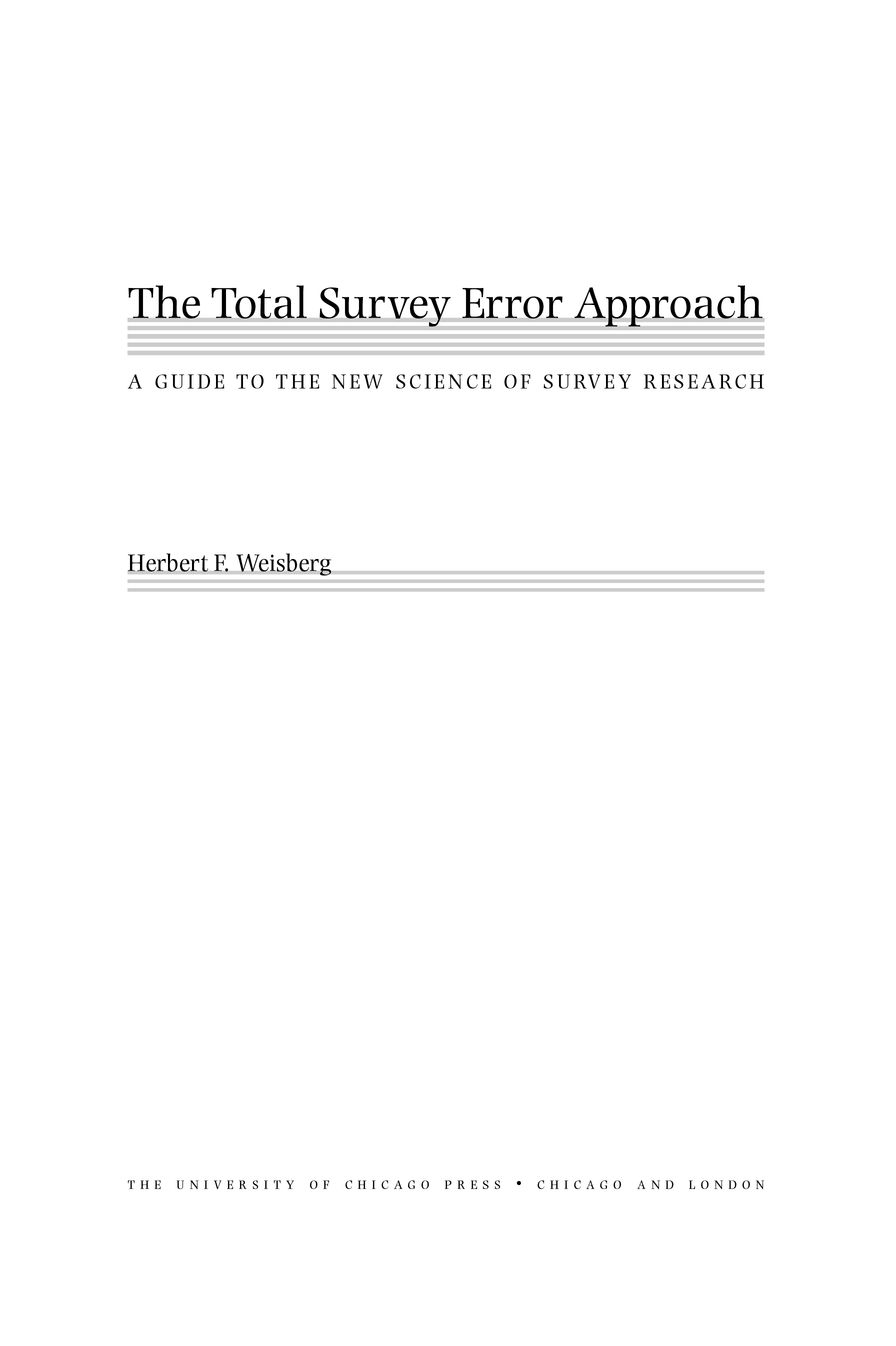
Preface
In recent decades, the survey field has been revolutionized with increased attention to both its basis in social psychology and its statistical underpinnings. The total survey error approach provides a new paradigm by which to understand and study this field, so it is time to proclaim the true arrival of survey research as a new science. This book uses the total survey error approach to present a unified approach to understanding the components of good survey research.
Survey research is an interesting research approach because the trade-offs between theory and practical considerations are quite direct. This has always been evident in survey sampling, where sampling statisticians learned early on to balance statistical theory with the difficulty of sampling in the real world. The initial knowledge of question writing was developed from practical interviewing, but in recent years the understanding of this topic has become more theoretically informed through insights from social psychology. The chapters in this book reflect the current balance between theory and practice, statistics and cognitive psychology.
The total survey error approach has become crucial to understanding survey research. The usual presentation of this approach focuses on the trade-offs between survey error and costs. This book extends this approach by generalizing the notion of survey constraints to include time and ethical considerations as well as monetary cost constraints. Additionally, it broadens the coverage by emphasizing the role of survey-related effects, effects that can be studied but cannot be minimized. Thus, this book argues that a full statement of the total survey error approach requires consideration of survey errors, survey constraints, and survey-related effects.
The total survey error framework is introduced in the opening three chapters, after which separate chapters detail each of the sources of survey error: measurement error (due to interviewers and respondents), nonresponse (at the item and unit levels), coverage error, and sampling error. Additional chapters deal with postsurvey error, mode differences, and survey ethics. The treatment of these topics is generally nonmathematical, presenting findings from the most recent journal articles and edited volumes, including extensive treatment of Internet polls.
The main chapters are organized around the different types of survey error. Each chapter begins with theoretical elements, pulling together insights from different disciplines, such as the social psychology of interviewing and relevant statistical theories. This is followed by detailed treatment of the specifics of the type of error and potential solutions. The chapters end with discussion of the constraints on error minimization due to costs, time, and ethics. The topic of measurement error due to respondents is so large that I have broken it into two separate chapters, one on question wording and one on questionnaire construction.
The organization of this book is unconventional, particularly by covering sampling error after rather than before the other major types of error. However, the point of the total survey error approach is that there is more to survey error than just the usual emphasis on sampling error. Beginning with sampling error would be to continue that overemphasis, whereas treating it last serves to emphasize the need to deal directly with the other sources of error. Still, the chapters on specific types of errorchapters 4 through 10are written so that they can be read in any order; thus the readers can follow their own preferences regarding topic ordering.
The main focus of this book is cross-section surveys of the mass public, with coverage of face-to-face, telephone, and Internet surveys in addition to self-administered questionnaires. Some discussion of panel surveys and establishment surveys is also provided. I have attempted to cover a wide variety of problems with surveys, giving evidence on both sides when there is no consensus yet as to how to deal with those problems.
This book was written because of two sets of indirect forces. First, Paul Beck, Kathleen Carr, Jerry Kosicki, Jon Krosnick, Paul Lavrakas, Kathleen McGraw, Tom Nelson, Randy Olsen, Toby Parcel, Randall Ripley, and Elizabeth Stasny all, not for this purpose, allowed me to learn from observing and participating in Ohio State Universitys high-quality survey operations and political psychology program. Second, unexpected personnel changes in spring 2001 led to my teaching a new practicum course in OSUs fledgling Graduate Interdisciplinary Specialization in Survey Research, giving me the not-necessarily-desired opportunity to see how much the survey research field had changed since the early 1990s as the total survey error approach has become dominant. I am also very appreciative of those who contributed more directly to this project: Steve Mockabee for his pounding into me the importance of the total survey error approach; Margaret Williams for her intensive journal review; Ron Rapoport, Andy Farrell, Elizabeth Stasny, Mike Traugott, Delton Daigle, and anonymous readers for their comments on the manuscript; Erin McAdams for her careful indexing; and the people at the University of Chicago Press for their fine work on this book.
PART I
Survey Error Theory
Scientific Survey Research
THE DEVELOPMENT OF A DISCIPLINE
Around 1939 George Gallups American Institute of Public Opinion published a pamphlet entitled The New Science of Public Opinion Measurement. That was a heady era in the survey world, with researchers having learned how to measure attitudes and how to sample the mass public. As the pamphlet indicated, this new science would use the sampling referendum (as it termed what we now call the sample survey), based on understanding the sample size required for confidence in results and on devising methods for obtaining representative cross-sections of respondents. Yet in retrospect it is clear that survey research was still in its infancy back then. Both the statistical underpinnings of survey methods and the underlying social psychology were primitive. It was appropriate for Gallups shop to exult in the early successes of their survey approach, but much more research was needed before it would be time to call this a science. Today, more than sixty years later, it finally is time to proclaim the new science of survey research. In the last few decades, survey research has accumulated a solid basis in both statistical methods and social psychology. The total survey error approach now provides a paradigm by which to understand and study this new science.
The purpose of this book is to explain the survey research process in the context of this new approach to the field. The first three chapters establish the background by reviewing the development of the survey field, outlining and extending the total survey error approach, and providing a common understanding of the different survey modes. The middle of the book follows the total survey error approachs emphasis on the different sources of survey errors, discussing the different elements of surveys through a focus on the sources of error. The final chapters turn to broader and summary issues.
Next page

